Let’s cut through the BS, shall we? Finding the right haircut isn’t just about following trends—it’s about discovering what works for your face, your lifestyle, and your personality. I’ve spent over 15 years watching women walk out of salons either floating on cloud nine or fighting back tears in the parking lot. The difference? Understanding what actually suits them versus what they saw on some influencer with completely different hair texture and face shape.
Hair is powerful. Like, seriously powerful. The right cut can make you feel invincible, while the wrong one can have you reaching for a hat collection faster than you can say “I should’ve brought better reference photos.” Been there, done that, bought the beanie to cover it up.
So here’s my promise: no sugar-coating, no impossible-to-achieve styles that require a personal stylist every morning, and definitely no one-size-fits-all nonsense. Just honest advice about 12 haircuts that have stood the test of time, who they actually work for, and how to know if they’re right for you.
The Classic Bob

The bob is basically the little black dress of haircuts. Timeless, versatile, and somehow always relevant. But not all bobs are created equal, and finding your perfect variation makes all the difference.
A traditional bob hits somewhere between your chin and shoulders with a straight, blunt cut. It works amazingly for women with fine to medium hair that’s naturally straight or with minimal wave. The structure of this cut gives the illusion of thickness, which is why it’s been a go-to for fine-haired women since forever.
If you’ve got a heart-shaped or oval face, you’re in luck—this style was practically made for you. Square faces can rock it too, but might wanna consider a softer, less angular version. The biggest misconception? That bobs are low-maintenance. They’re not. They require regular trims every 4-6 weeks to maintain that precise line, and growing them out is kinda a nightmare. Trust me on this one, I’ve witnesed many a awkward grow-out phase in my career.
The Textured Lob
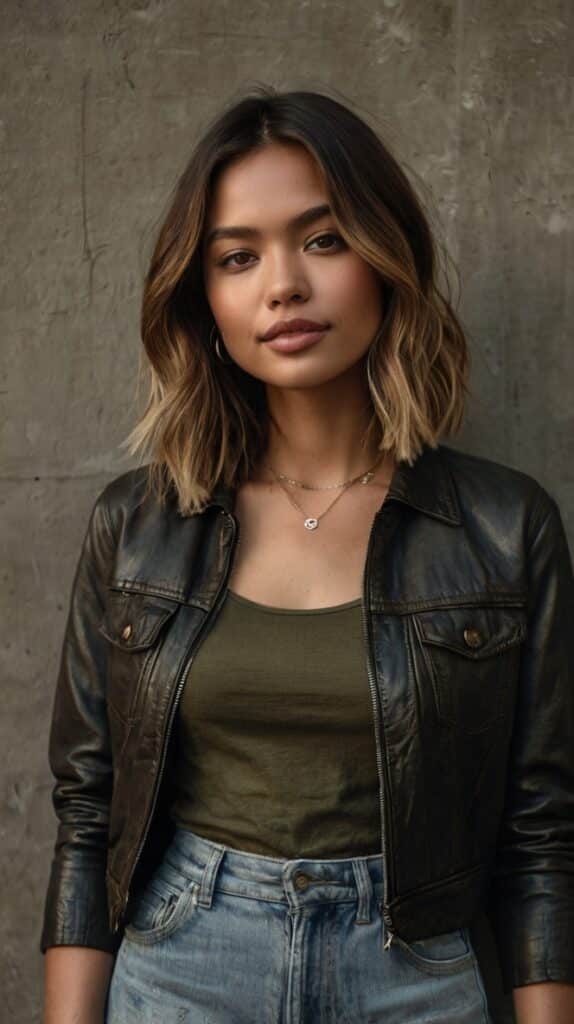
The lob (long bob) deserves its own category because it’s literally saved thousands of women from post-haircut regret. It’s that sweet spot between short and long that somehow works for almost everyone.
What makes a textured lob different from just a longer bob is the intentional layers and texture cut throughout. This creates movement, volume, and a certain effortlessness that looks like you just rolled out of bed looking fantastic (even though we all no that’s rarely the case). It typically falls anywhere from collarbone to just past the shoulders.
This cut is particularly magical for those with thick, wavy, or curly hair who want something manageable without going super short. The texturing takes weight out while maintaining length. It’s also forgiving during the growing-out phase, making it perfect for commitment-phobes or those who change there mind frequently. Style it sleek for work or tousled for weekends—versatility is its superpower.
The Pixie Cut

Let’s be real—pixie cuts separate the bold from the hesitant. They’re striking, confident, and contrary to popular belief, incredibly feminine when done right. But they’re not for the faint of heart or those who use their hair as a security blanket.
The modern pixie ranges from super short (think Mia Farrow vibes) to slightly longer on top with shorter sides. The best candidates have oval, heart, or diamond-shaped faces with delicate features and great bone structure. That’s because this cut puts your face front and center—there’s nowhere to hide.
The biggest myth about pixies? That there low-maintenance. While you’ll save on shampoo and drying time, you’ll need trims every 3-4 weeks to keep the shape, and styling products are non-negotiable. Growing it out is also a commitment that’ll test your patience, requiring strategic cuts to avoid the dreaded “mullet phase.” But for those who take the plunge and suit it? The freedom is absolutely worth it.
The Shag
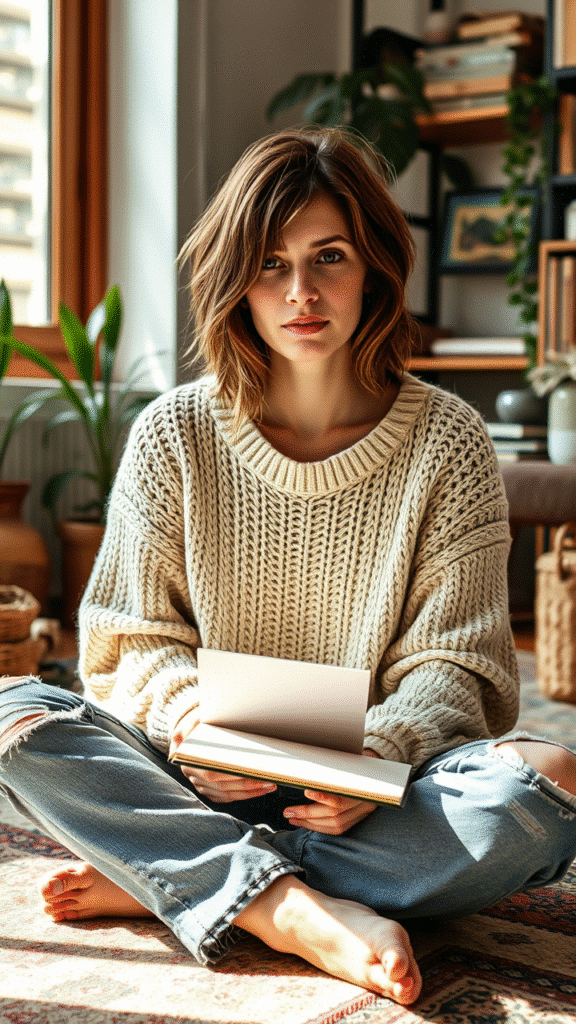
The shag is having a massive renaissance, and for good reason—it’s the perfect balance of cool-girl effortlessness and structured style. This 70s-inspired cut is characterized by layers upon layers, typically with curtain bangs that blend seamlessly into the rest of the cut.
What makes the modern shag different from its predecessor is the softness. Today’s version is less choppy and more blended, creating movement without looking dated. It’s ideal for medium to thick hair with natural texture—waves and curls absolutely shine in this cut.
This style works across face shapes but is especially flattering for round or square faces, as the layers create angles and dimension. The best part about the shag? It’s designed to work with your natural texture, not against it. That means less styling time and more embracing what ya momma gave you. Just be prepared for occasional weird growth phases when you need a trim, as some layers will hit awkward lengths before others.
The Blunt Mid-Length Cut
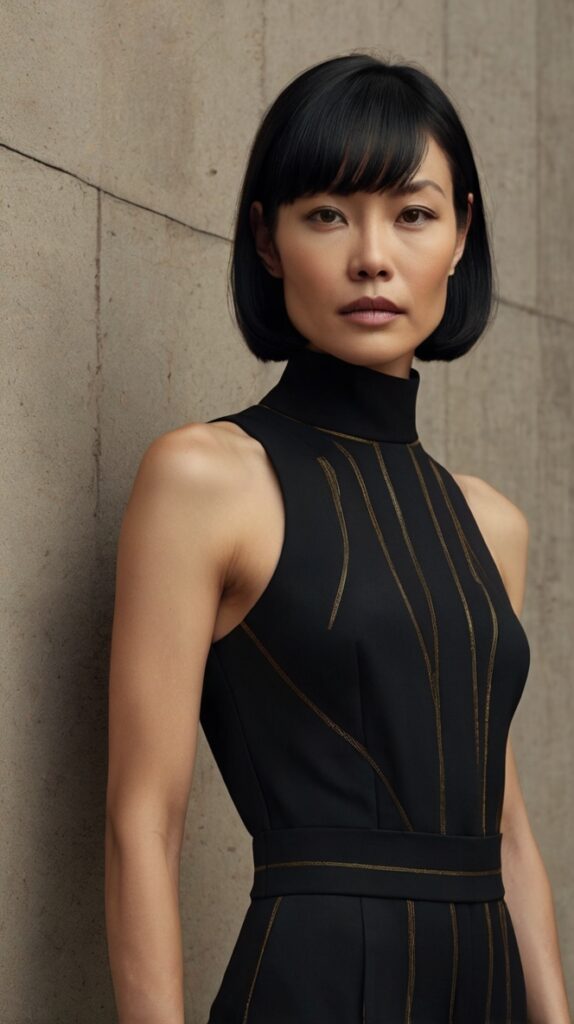
When precision meets simplicity, you get the blunt mid-length cut—a statement of elegance that says “I’m put together” without trying too hard. This no-layers approach creates a strong, clean line that typically falls between the collarbone and a few inches above the waist.
This style works wonders for fine to medium hair that’s straight or slightly wavy. The clean line creates the illusion of thickness and health, making it perfect for those wanting their hair to look fuller. Contrary to what many think, this cut isn’t just for poker-straight hair—it can look equally stunning with a slight bend or wave added.
The maintenance is relatively manageable, requiring trims every 8-10 weeks to maintain that precise line. One thing to remember though—without layers to create movement, you’ll need to rely on styling for dimension. A center part works beautifully for oval and heart-shaped faces, while side parts better compliment round or square faces. If your struggling with frizz or unruly texture, this might not be your best bet unless your willing to put in regular smoothing work.
The Curtain Bangs Combo
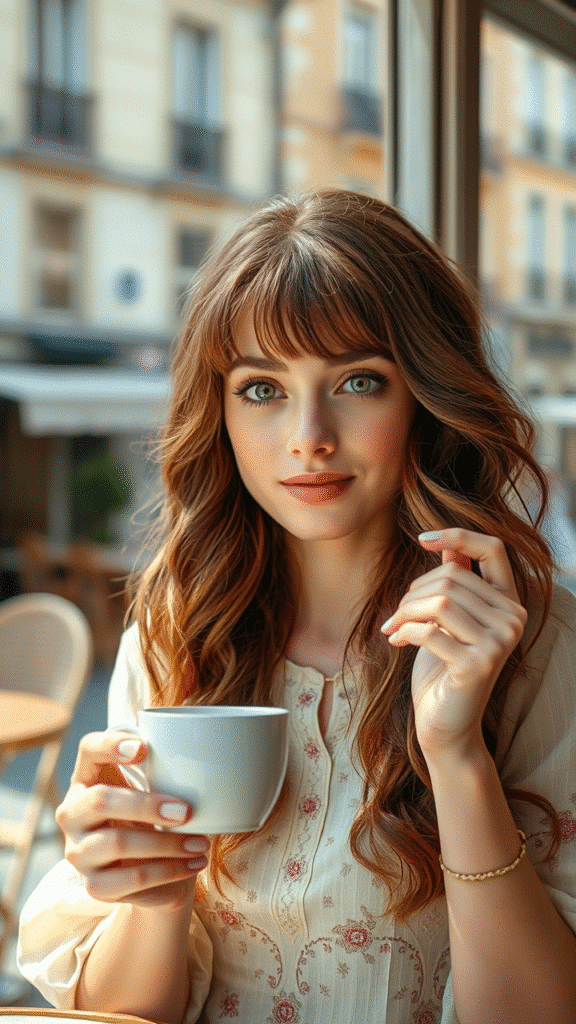
Curtain bangs have exploded in popularity becuz they offer all the face-framing benefits of bangs without the commitment or awkwardness of traditional straight-across fringe. They’re the gateway drug of bangs—even the most hesitant can usually be convinced to try them.
These bangs are characterized by a center-parted style that’s shorter in the middle and gradually gets longer as they blend into the rest of your hair on the sides—like curtains framing a window (your gorgeous face). They can be paired with virtually any length or style, making them incredibly versatile.
What makes them so universally flattering is how they soften features while highlighting cheekbones and eyes. They work across face shapes but are particularly magical for wider foreheads or square jawlines. The grow-out phase is significantly less painful than with traditional bangs, as they simply become face-framing layers. Just keep in mind that they do require some styling effort—a round brush and blow dryer are your friends here, especially if your hair has any natural wave or cowlicks.
The Modern Mullet
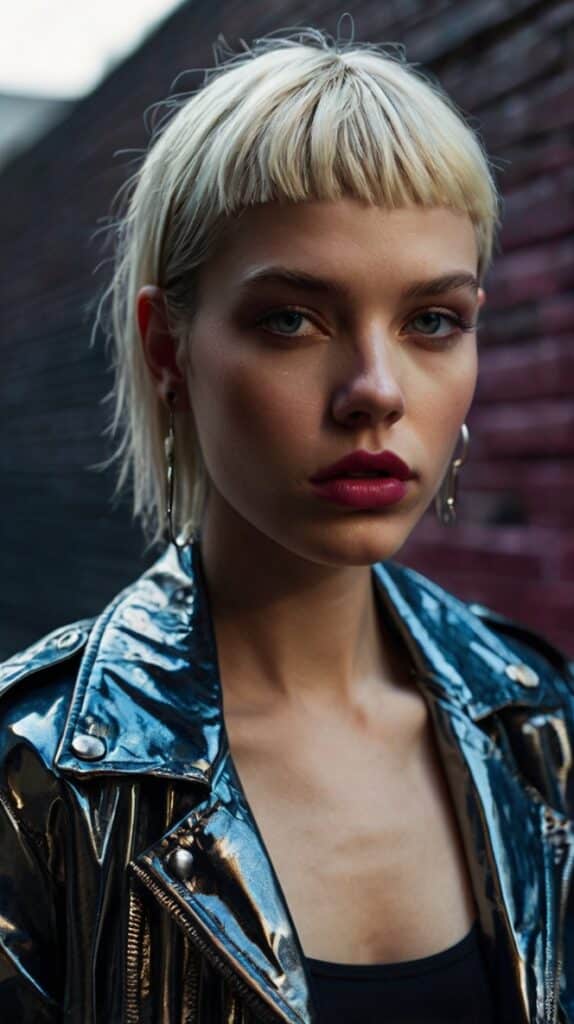
I can hear the gasps already. Yes, I said mullet. But before you close this article in horror, today’s mullet has evolved dramatically from the Billy Ray Cyrus nightmare of the 80s. The contemporary version is softer, more blended, and surprisingly wearable.
The modern mullet features shorter layers around the crown and face with longer lengths at the back, but with much more subtle transitions than its notorious predecessor. It’s edgy without being costume-like, and can be adapted from subtle to statement depending on your comfort level.
This cut absolutely sings on textured hair—waves, curls, and coils give it dimension and prevent it from looking too severe. It’s particularly flattering on oval, diamond, and heart-shaped faces. The biggest perk? It’s designed to embrace natural texture, meaning less daily styling. The biggest challenge? Finding a stylist who truly understands the modern interpretation and doesn’t send you home looking like you’re headed to a retro costume party. Do your research and bring plenty of current reference photos.
The French Bob
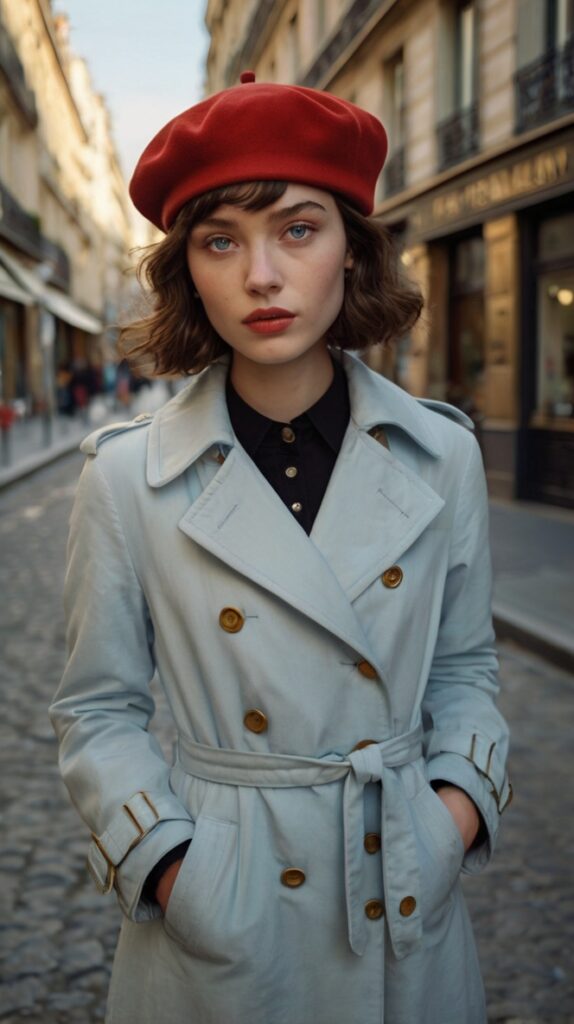
The French bob is shorter than the classic bob, typically sitting at chin-length or just above, often accompanied by bangs (either full or curtain style). It exudes that effortless French-girl chic that somehow looks both timeless and current.
What distinguishes the French bob is its slightly undone, lived-in quality. Unlike the precise geometric lines of a traditional bob, the French version has soft edges and a certain nonchalance that says “I didn’t try too hard, I just naturally look this good” (even though we all know that effortless look often takes effort).
This style works beautifully for fine to medium hair with straight to wavy textures. It’s particularly flattering for heart, oval, and diamond-shaped faces. The maintenance is moderate—trims every 6-8 weeks keep it looking intentional rather than grown-out. One thing to note: this style requires confidence to carry off, as it’s both distinctive and face-revealing. But for those who embrace it, it projects an unmistakable sophistication and boldness that turns heads for all the right reasons.
Long Layers

Long layers are the reliable best friend of haircuts—not the most exciting option, perhaps, but consistently flattering and versatile. They’re the cut most requested by those who want change without sacrifice, offering freshness while maintaining length.
The beauty of long layers lies in their adaptability. They can be subtle for just a hint of movement or more dramatic for maximum volume and dimension. They work across hair textures, though the effect varies—creating soft movement in straight hair, enhancing natural waves, or helping curls spring up by removing weight.
This style suits most face shapes and can be customized to highlight your best features—shorter face-framing layers can accentuate cheekbones, while layers starting lower down lengthen round faces. The maintenance is forgiving, requiring trims only every 10-12 weeks. Just don’t make the mistake of letting an inexperienced stylist go to town—too many layers can create a dreaded “Christmas tree” effect that’s hard to recover from. And be specific about where you want layers to start—”long layers” means different things to different stylists.
The Curly Shag
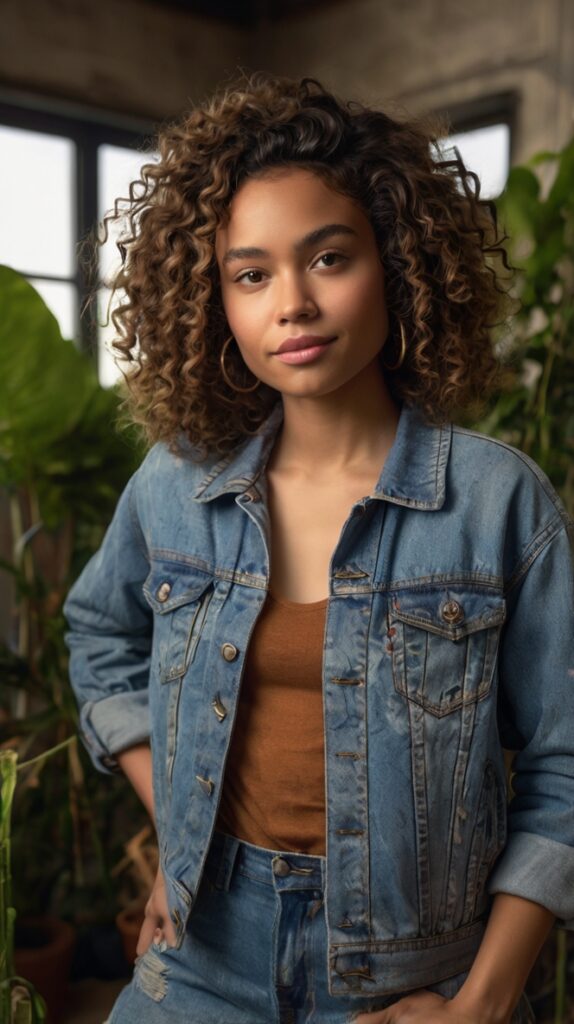
For those blessed with natural curls or waves, the curly shag is nothing short of revolutionary. It’s a curl-specific cut that works with your natural texture instead of fighting against it, creating shape, bounce, and definition where one-length cuts often fall flat.
The curly shag incorporates shorter layers around the crown and face, with longer lengths throughout and often includes some form of bangs (typically curtain or side-swept). The key difference from a regular shag is that it’s cut dry and with curl patterns in mind, creating a shape that enhances your natural texture rather than expecting it to behave like straight hair.
This style is particularly magical for those with dense, thick curls who struggle with triangle-shaped hair or flatness at the roots. It distributes volume evenly, allowing curls to spring up and show their natural pattern. The maintenance is relatively low once you find your curly hair routine, requiring trims every 3-4 months. The most important factor? Finding a stylist who specializes in curly cuts—this isn’t the time to take chances with someone who only occasionally works with texture.
The Blunt Bob With Bangs
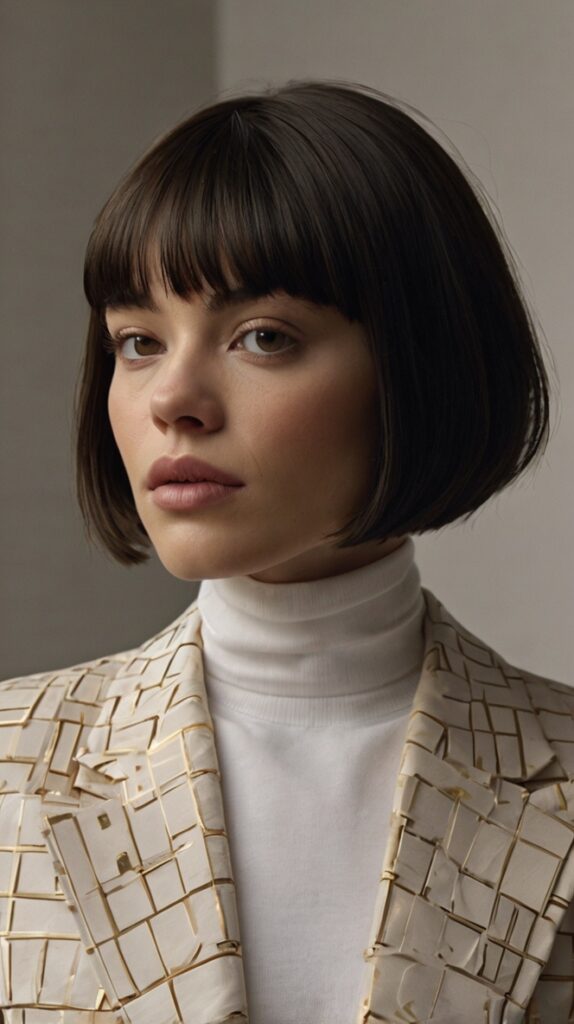
When you combine the structure of a blunt bob with the face-framing power of bangs, you get a combination that’s both sophisticated and slightly edgy. This look makes a statement without screaming for attention—it whispers confidence.
The key characteristics are a precisely cut, one-length bob (typically chin to shoulder-length) paired with some form of fringe—whether full and blunt, side-swept, or curtain style. The clean lines create a frame for your face that’s both polished and modern.
This cut works beautifully for fine to medium hair with minimal wave, as the blunt lines create the appearance of thickness. It flatters oval, heart, and diamond-shaped faces particularly well. The maintenance is definitely on the higher side—bangs need regular trims every 2-3 weeks, and the bob itself requires shaping every 6-8 weeks to maintain those precise lines. The commitment extends to styling too; this isn’t a wash-and-go look for most people, requiring at least some heat styling to achieve that sleek finish. But for those willing to put in the effort, the results are undeniably chic.
The Wolf Cut

The wolf cut is the wild child that emerged from TikTok to become a legitimate salon request. It’s essentially what happens when a shag and a mullet have a more wearable baby—lots of choppy layers, volume at the crown, and length at the back.
This cut features short, choppy layers at the top and around the face, gradually getting longer toward the back, creating a distinctive silhouette. It typically includes some form of bangs, usually curtain or wispy full bangs, that blend into the face-framing layers.
The wolf cut works across hair textures but truly shines on wavy to curly hair, where the layers create natural volume and movement. It’s particularly flattering for oval, heart, and diamond-shaped faces. The maintenance is moderate—the grown-out phase is actually part of the appeal, giving it an increasingly lived-in look, but regular trims every 8-10 weeks keep it from losing its distinctive shape. The best part? It’s designed for a tousled, imperfect finish, making it ideal for those who prefer a more effortless styling routine.
Finding Your Perfect Match
After exploring these 12 options, you might be wondering how to actually choose the right one for you. It’s not just about what looks good on paper—or on your Pinterest board.
Consider your lifestyle first. Be brutally honest about how much time your willing to spend styling your hair each morning. A high-maintenance cut on someone with a low-maintenance routine is a recipe for daily frustration. Think about your typical morning: if you barely have time for coffee, a style that requires 30 minutes of heat styling isn’t realistic.
Face shape matters, but it’s not everything. While certain cuts complement specific face shapes, don’t let that be the only deciding factor. Your hair texture, density, and natural growth patterns are equally important. A cut that fights against your natural texture will always be more work.
Bring multiple reference photos to your consultation, but be open to your stylist’s expertise. They understand how hair behaves in ways that even the most researched client might not. The perfect cut is often a collaboration between your vision and their technical knowledge.
Most importantly, remember that hair grows back. While a bad haircut can feel devastating in the moment, it’s ultimately temporary. Sometimes the cuts that initially feel like mistakes lead us to styles we’d never have tried otherwise. The perfect haircut isn’t just about how it looks—it’s about how it makes you feel. When you find that magical combination of flattering, manageable, and confidence-boosting, you’ll know you’ve found your match.
So go ahead, take the leap. Your perfect cut is waiting, and now you’re armed with the knowledge to find it.

Sandra is an experienced blogger and the voice behind many engaging stories on Curl Moods. With a passion for lifestyle, wellness, and authentic storytelling, she brings warmth and insight to every post. Her writing reflects a deep understanding of her readers’ moods and moments.
